东京必去旅游景点推荐理由 第一次去东京,有哪些精髓景点不容错过?
2023-08-09 15:17:54 | 青旅游

第一次去东京,有哪些精髓景点不容错过?
日本东京,对于中国来说,日本是个又爱又恨的国度。
对我来说,日本的动漫是我的整个童年,对日本也是非常的喜欢的。
-
银座 ( “去了东京,一定要去银座”。一个繁华的商业区, 出去旅行一定是要买东西的,银座里面的东西大多都是那种高大上品牌,但是因为是免税的,所以也比国内便宜很多,喜欢买一些奢侈品啊,大牌的朋友去东京一定会去银座购物的,购物者的天堂。)
-
富士山, 离东京车程两个半小时,夏天开始是开放登山的,你可以尝试一下,深夜登山顶,在三四点钟看山顶的日出。富士山,是小时候日本动画片都是富士山的背景呢,充满了对富士山的幻想和憧憬。 青旅游
请点击输入图片描述
-
东京塔 (说起东京铁塔,就会想起埃菲尔铁塔了。它是东京很标志性的建筑,到了东京,一定要在至高处欣赏整个东京的风景。150米直达电梯,超大型的瞭望台,可以让你欣赏到整个东京的风景)
请点击输入图片描述
-
新宿 (新宿是整个东京最著名的繁华商区之一,真的是热闹非凡,像极了电视里那种人山人海的街道,星宿还是一个 购物者的天堂, 出来这里旅游一定要买买买,物美价廉。
-
根津神社, 神社和东京大学很近,精髓之处在于他是日本很多名人的故居,喜欢历史和喜欢那些名人经历的朋友可以非常值得一去;还有一个很特别的地方是它每年的四月中下旬神社内有及万株杜鹃花绽放。场景特别震撼。
望采纳。

东京有什么好玩的地方?哪些景点必去?
1、东京迪士尼乐园推荐理由:适合亲子游的童话世界,大人也可以在这里找回童年的回忆
2、浅草寺
推荐理由:东京都内历史最悠久的建筑,周围有很多日本特色的小商铺
3、东京迪士尼海洋乐园
推荐理由:全球唯一的海洋主题迪士尼,新鲜刺激的项目很多,年轻一族的最爱
4、上野公园
推荐理由:东京最著名的赏樱地,鲁迅先生笔下的地方
5、东京塔
推荐理由:东京的地标性建筑,站在塔顶可以俯瞰东京全市,夜景更是迷人
6、台场
推荐理由:东京最新的娱乐场所集中地,经常有日剧在这里取景拍摄
7、皇居
推荐理由:天皇及皇室居住的地方,其内二重桥下的护城河被公认为皇居最美之地
8、明治神宫
推荐理由:是日本名人举办传统婚礼的热门场所
9、筑地市场
推荐理由:世界规模最大的水产市场之一,东京吃海鲜性价比最高的地方。
10、六本木之丘
推荐理由:目前东京最受欢迎的夜生活大本营,时髦的美术馆、无敌夜景和高档餐厅一应俱全
还有5113条相关问答,更多东京新奇玩法,点击查看
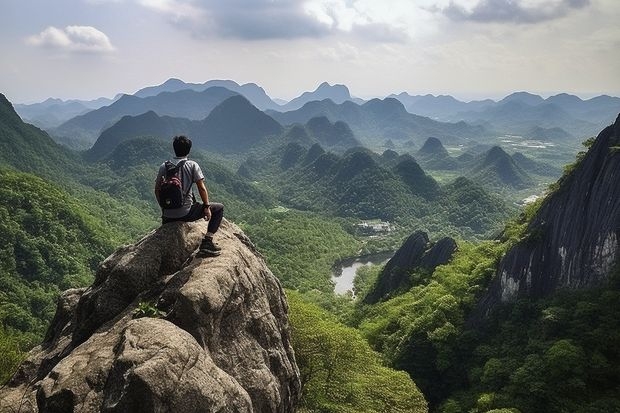
东京文化旅游景点介绍英文版 东京著名景点英文介绍
青旅游(https://www.qinlvyou.com)小编还为大家带来东京文化旅游景点介绍英文版 东京著名景点英文介绍的相关内容。
求日本京都著名景点的英文介绍
Arashiyama(岚山)
Arashiyama (岚山 ?) is a district on the western outskirts of Kyoto, Japan. It also refers to the mountain across the _i River, which forms a backdrop to the district.
Notable tourist sites in Arashiyama include
The Iwatayama Monkey Park on the slopes of Mount Arashiyama. Over 170 monkeys live at the park. While the monkeys are wild, they have become accustomed to humans. The park is located on a small mountain not far from the Saga-Arashiyama rail station. Visitors can approach and photograph the monkeys. At the summit is a fenced enclosure, from within which visitors can feed the monkeys.
The romantic "Moon Crossing Bridge" (渡月桥,Togetsukyō), notable for its views of cherry blossoms and autumn colors on the slopes of Mt Arashiyama.
The tombstone of the Heike courtesan Kogo of Sagano.
Tenryū-ji, the main temple of the Rinzai school, one of the two main sects of Zen Buddhism in Japan.
The hamlet of Kiyotaki, a small scenic village at the base of Mt Atago, the home to a notable Shinto shrine.
Matsuo Shrine, half a mile south of the area, which is home to a blessed spring. It is also one of the oldest shrines in the Kyoto area, founded in 700. The alleged restorative properties of the spring bring many local sake and miso companies to the shrine for prayers that their product will be blessed.
Kameyama koen has a stone commemorating Zhou Enlai's visited to Arashiyama. He was moved by the cherry blossoms and mountain greenery. The four poems Zhou Enlai wrote about his visit are engraved on a stone monument: "Arashiyama in the Rain."
Nijō Castle(二条城)
Nijō Castle (二条城 ,Nijō-jō?) is a flatland castle located in Kyoto, Japan. The castle consists of two concentric rings of fortifications, the Ninomaru Palace, the ruins of the Honmaru Palace, various support buildings and several gardens. The surface area of the castle is 275,000 square meters, of which 8000 square meters is occupied by buildings.
History
Present plan of Nijō Castle (click for detailed view)In 1601, Tokugawa Ieyasu, the founder of the Tokugawa Shogunate, ordered all the feudal lords in Western Japan to contribute to the construction of Nijō Castle, which was completed during the reign of Tokugawa Iemitsu in 1626. Parts of Fushimi Castle, such as the main tower and the Kara Gate, were moved here in 1625-26.[1] It was built as the Kyoto residence of the Tokugawa Shoguns. The Tokugawa Shogunate used Edo as the capital city, but Kyoto continued to be the home of the Imperial Court. Kyoto Imperial Palace is located north-east of Nijo Castle.
The central keep, or donjon, was struck by lightning and burned to the ground in 1791.
In 1788, the Inner Palace was destroyed by a city-wide fire. The site remained empty until it was replaced by a prince's residence transferred from the Kyoto Imperial Palace in 1893.
In 1867, the Ninomaru Palace was the stage for the declaration by Tokugawa Yoshinobu, returning the authority to the Imperial Court. Next year the Imperial Cabinet was installed in the castle. The palace became imperial property and was declared a detached palace. During this time, the Tokugawa hollyhock crest was removed wherever possible and replaced with the imperial chrysanthemum.
In 1939, the palace was donated to the city of Kyoto and opened to the public the following year.
Ryōan-ji(龙安寺)
Ryōan-ji (Shinjitai: _安寺, Kyūjitai: 龙安寺 ?, The Temple of the Peaceful Dragon) is a Zen temple located in northwest Kyoto, Japan. Belonging to the Myoshin-ji school of the Rinzai branch of Zen Buddhism, the temple is one of the Historic Monuments of Ancient Kyoto, a UNESCO World Heritage Site.
The site of the temple was originally a Fujiwara family estate. It eventually came into the hands of the Hosokawa clan branch of the Fujiwaras. Hosokawa Katsumoto inherited the residence, and lived here before the _nin War. Katsumoto willed the war-ravaged property to be converted into a Zen sect temple complex after his death. Later Hosokawa emperors are grouped together in what are today known as the "Seven Imperial Tombs" at Ryoan-ji. The burial places of these emperors -- Uda, Kazan, Ichijō, Go-Suzaku, Go-Reizei, Go-Sanjō, and Horikawa -- would have been comparatively humble in the period after their deaths. These tombs reached their present state as a result of the 19th century restoration of imperial sepulchers (misasagi) which were ordered by Emperor Meiji.[1]
Ryōan-ji's tsukubai (蹲踞 ?), which is a small basin provided at Japanese Buddhist temples for visitors to purify themselves by the ritual washing of hands and rinsing of the mouth.An object of interest near the rear of the monks quarters is the carved stone receptacle into which water for ritual purification continuously flows. This is the Ryōan-ji tsukubai (蹲踞 ?), which translates literally as "crouch;" and the lower elevation of the basin requires the user to bend a little bit to reach the water, which suggests supplication and reverence.[2] The kanji written on the surface of the stone are without significance when read alone. If each is read in combination with 口 (kuchi), which the central bowl is meant to represent, then the characters become 吾, 唯, 足, 知. This is read as "ware tada taru (wo) shiru" and translates literally as "I only know plenty" (吾 = ware = I, 唯 = tada = only, 足 = taru = plenty, 知 = shiru = know). The meaning of the phrase carved into the top of the tsukubai is simply that "what one has is all one needs" and is meant to reinforce the basic anti-materialistic teachings of Buddhism.
The absence of a dipper is intended to imply that the water is for the soul only and that it is necessary to bend the knee in humility in order to receive its blessing.
Kiyomizu-dera(清水寺)
Kiyomizu-dera (清水寺 ?), full name Otowa-san Kiyomizu-dera (音羽山清水寺 ?) is an independent Buddhist temple in eastern Kyoto. The temple is part of the Historic Monuments of Ancient Kyoto (Kyoto, Uji and Otsu Cities) UNESCO World Heritage site.[1] Not one nail is used in the whole temple. The temple should not be confused with Kiyomizu-dera in Yasugi, Shimane, which is part of the 33-temple route of the Chūgoku 33 Kannon Pilgrimage through western Japan.[2]
其实这些都是维基百科找来的,本来想给链接的,百度说我有广告,只贴了部分,其他的可用google 维基百科英文版找,包括景点介绍,历史什么的很全的。
日本又哪些景点 (中英文互译的)
推荐景点一:大涌谷
大涌谷
景点简介
大涌谷(Owakudani)是箱根最著名的旅游景点。在绿树环抱的箱根中惟独此处山岩裸露,岩缝间喷出的地热蒸气雾气腾腾,令人感到地球的生命运动,尉为壮观。由此可眺望富士山和箱根群山的美丽景色。
推荐景点二:东京迪斯尼
东京迪斯尼
景点简介
东京迪斯尼有两大主题乐园,七座舒适的大饭店,以及其它购物娱乐设施所组成的欢乐世界。是大人找回童真,小孩寻找快乐的地方。
推荐景点三:东京铁塔
东京铁塔
景点简介
东京塔(Tokyo
Tower)位于东京市内,建成于1958年,塔高333米,这座日本最高的独立铁塔上部装有东京都7个电视台、21个电视中转台和广播台等的无线电发射天线。在250米高的地方,也设有一个特别展望台。展望台四边都是落地的大玻璃窗,窗向外倾斜。
推荐景点四:富士山
富士山
景点简介
富士山(Fuji
Mountain)位于本州岛中南部,海拔3776米,是日本最高峰,日本人奉之为“圣山”,是日本民族的象征,距东京约80公里,跨静冈、山梨两县,面积为90.76平方公里。整个山体呈圆锥状,山顶终年积雪。
推荐景点五:唐招提寺
唐招提寺
景点简介
唐招提寺(Toshodai
Temple)位于奈良市的唐招提寺是由中国唐代高僧鉴真和尚亲手兴建的,是日本佛教律宗的总寺院,这座具有中国盛唐建筑风格的建筑物被确定为日本国宝。
日本著名景点英文名称
1,富士山( Mount Fuji)
富士山,是一座跨越在日本静冈县(富士宫市、裾野市、富士市、御殿场市、骏东郡小山町)与山梨县(富士吉田市、南都留郡鸣_村)之间的活火山。
2,东京塔(Tokyo Tower)
东京塔是东京地标性建筑物,位于东京都港区芝公园,高332.6米。东京塔除主要用于发送电视、广播等各种无线电波外、还在大地震发生时发送JR列车停止信号,兼有航标、风向风速测量、温度测量等功能。
3,阿苏山(ASU mountain)
阿苏山是日本著名活火山。位于九州岛熊本县东北部,是熊本的象征,以具有大型破火山口的复式火山闻名于世。略呈椭圆形,南北长24公里,东西宽18公里,周围约120公里,面积250平方公里。
4,唐招提寺(Tōshōdai Temple)
唐招提寺,日本佛教律宗建筑群。简称为招提寺 。在日本奈良市西京五条。由中国唐朝鉴真主持,于公元759年建成,与东大寺的戒坛院并为传布和研究律学的两大道场。
5,鹿苑寺(Deer temple)
鹿苑寺(ろくおんじ),是位于日本京都市北区的临济宗相国寺派的寺院。其中,内外都贴满了金箔的三层楼阁建筑(舍利殿)也被称为金阁,包括舍利殿在内的寺院整体也被称为金阁寺(きんかくじ)。该寺为相国寺的山外塔头寺院。
参考资料来源:百度百科-富士山
参考资料来源:百度百科-东京塔
参考资料来源:百度百科-阿苏山
参考资料来源:百度百科-唐招提寺
参考资料来源:百度百科-鹿苑寺
介绍东京,要英文!!急!!
如下:
Tokyo is the capital of Japan.It is the biggest city in Asia and it is also very beatiful.You can see the beatiful mountain in Tokyo.There is snow on it and it looks very nice.I hope on day I can go there.
更多相关文章关注青旅游:www.qinlvyou.com
免责声明:文章内容来自网络,如有侵权请及时联系删除。

周末东莞自驾一日游好玩景点推荐,7个东莞短途自驾游好去处 今天我为大家整合了东莞自驾游必去景点排行榜,告诉你东莞有什么值得你一去好玩的地方。 1.松湖生态园 松湖生态园位于东莞美丽的松山湖,是一家集农家乐,团队出行,亲子游,景区旅游为一体的花海主题农庄。 原生态农家乐:柴火野炊、木炭烧烤、农家围餐、大型LED卡啦OK。 景区游玩观景:童话世界、荷兰风车、玫瑰花园、罗曼花园、景秀长城

西昌一日游,有哪些不容错过的景点推荐? 西昌位于中国四川省西南部,是凉山彝族自治州的政治、经济、文化中心。这里不仅风光秀丽,气候宜人,还有丰富的旅游资源和多样的民族文化。如果你计划进行一日游,以下是一些不容错过的景点推荐: 邛海泸山风景区:这里是西昌最著名的风景区之一,邛海是四川省第二大淡水湖,泸山则是邛海的天然屏障。在这里,你可以欣赏到湖光山色交相辉映的美丽景色。泸山上有许多古迹,如泸山寺

珠海一日游,有哪些不容错过的景点推荐? 珠海是中国广东省的一个沿海城市,以其优美的海滨风光和众多的旅游资源而闻名。如果你计划进行一日游,以下是一些不容错过的景点推荐: 长隆海洋王国-这是一个集海洋动物展览、娱乐设施和表演于一体的大型主题公园。你可以在这里看到各种海洋生物,体验刺激的游乐设施,观看精彩的海豚和海狮表演。如果你喜欢海洋生物和冒险游乐项目,这里绝对是一个不错的选择。 珠海渔女雕像

独自去南通旅游,是种怎样的体验? 独自去南通旅游,是一种充满探索和发现的体验。这座城市位于江苏省东部,长江与黄海交汇处,拥有丰富的自然资源和深厚的文化底蕴。 首先,来到南通,你会发现这里的自然风光非常迷人。城市周围有许多美丽的湖泊和河流,如著名的狼山、濠河等,这些地方都是放松心情、享受自然的好去处。你可以在狼山上俯瞰整个城市,感受大自然的壮丽;在濠河边漫步,欣赏两岸的美景,体验江南水乡的韵味

珠海一日游,有哪些不容错过的景点推荐? 珠海是中国广东省的一个沿海城市,以其优美的海滨风光和众多的旅游资源而闻名。如果你计划进行一日游,以下是一些不容错过的景点推荐: 长隆海洋王国-这是一个集海洋动物展览、娱乐设施和表演于一体的大型主题公园。你可以在这里看到各种海洋生物,体验刺激的游乐设施,观看精彩的海豚和海狮表演。如果你喜欢海洋生物和冒险游乐项目,这里绝对是一个不错的选择。 珠海渔女雕像

景德镇必去五大景点攻略 🌟🏺景德镇,这座被誉为“瓷都”的城市,以其精美的陶瓷艺术和深厚的文化底蕴吸引着世界的目光。这里不仅有着千年的瓷器制作历史,还有着令人惊叹的自然景观。🎨🍃准备好你的心灵,让我们一起走进景德镇,探索那些美轮美奂的景点,体验瓷都的魅力! 🔥景德镇古窑民俗博览区🔥 🔍景点介绍: 景德镇古窑民俗博览区是一处完整展示陶瓷生产工艺和历史文化的综合性景区,让游客能够

阜阳旅游有哪些景点不容错过? 阜阳市位于安徽省中部,是一座历史悠久、文化底蕴深厚的城市。这里有许多值得一游的景点,以下是其中几个不容错过的: 1.颍上古城:颍上古城是阜阳市的一个历史文化名城,有着悠久的历史和丰富的文化遗产。这里有古老的城墙、古街巷、古建筑等,可以感受到浓厚的历史氛围。 2.太和县石牌楼群:太和县是中国石牌楼之乡,这里有许多保存完好的石牌楼,如明代的“石牌楼群”和清代的“石

邯郸一日游,有哪些不容错过的美食推荐? 邯郸位于中国河北省南部,是一座历史悠久的城市,也是中华文明的发祥地之一。在邯郸一日游中,除了参观丰富的历史遗迹和自然风光外,品尝当地的美食也是一大不容错过的体验。以下是一些邯郸必尝的美食推荐: 大名二毛烧鸡-大名二毛烧鸡是邯郸非常有名的一道传统名菜,以其皮脆肉嫩、色泽金黄、香味扑鼻而著称。这道菜选用优质的鸡肉,经过特殊的腌制和烹饪工艺制作而成,吃起来口
-
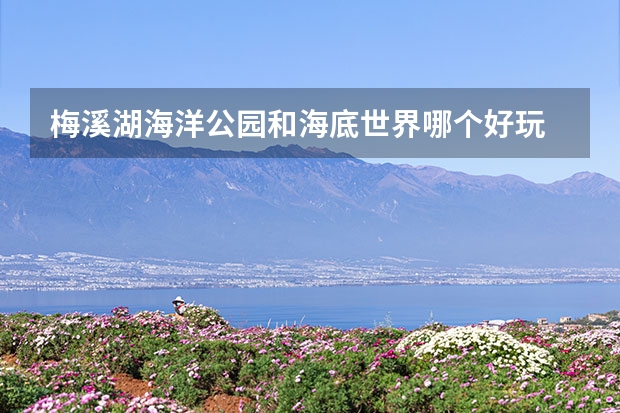 梅溪湖海洋公园和海底世界哪个好玩
梅溪湖海洋公园和海底世界哪个好玩2024-07-03 15:30:42
-
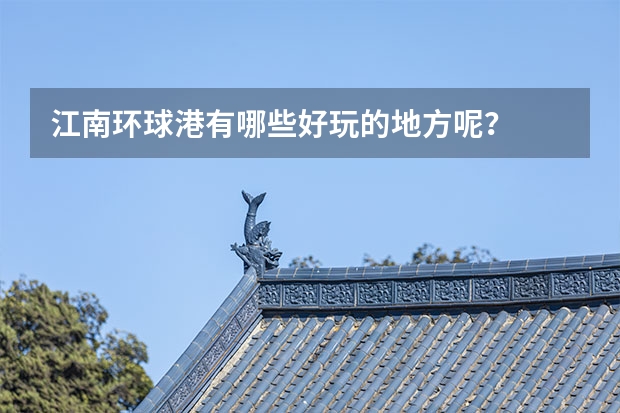 江南环球港有哪些好玩的地方呢?
江南环球港有哪些好玩的地方呢?2024-06-27 08:25:07
-
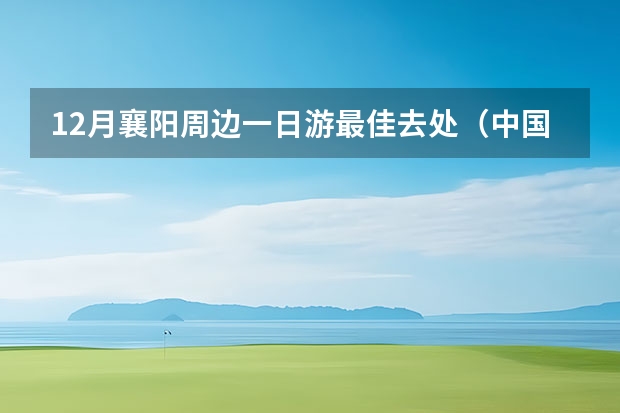 12月襄阳周边一日游最佳去处(中国及湖北襄阳唐城一日游介绍襄阳唐城一日游详细介绍)
12月襄阳周边一日游最佳去处(中国及湖北襄阳唐城一日游介绍襄阳唐城一日游详细介绍)2024-06-24 20:21:34
-
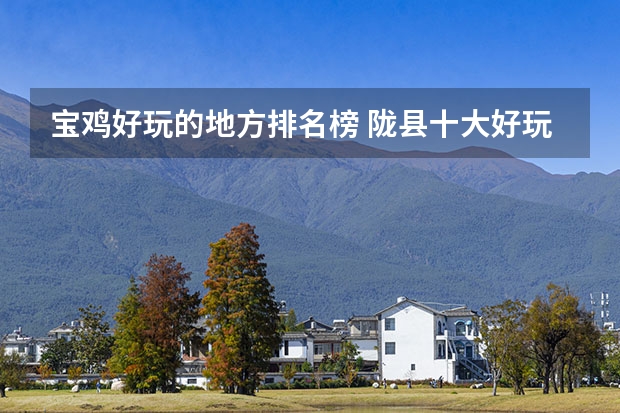 宝鸡好玩的地方排名榜 陇县十大好玩景点
宝鸡好玩的地方排名榜 陇县十大好玩景点2024-05-26 21:01:44
-
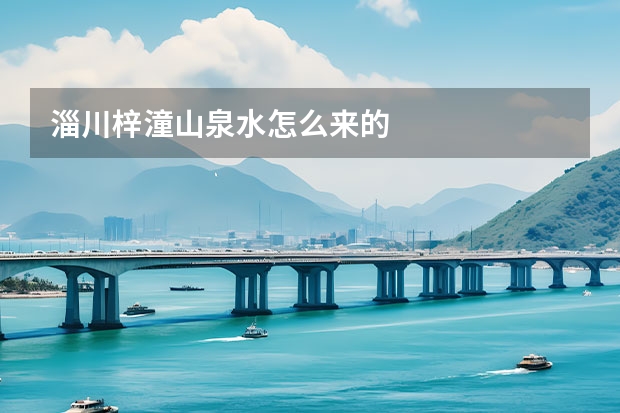 淄川梓潼山泉水怎么来的
淄川梓潼山泉水怎么来的2024-04-22 14:46:58
-
 深圳欢乐谷下雨天开放吗
深圳欢乐谷下雨天开放吗2024-06-30 18:37:29